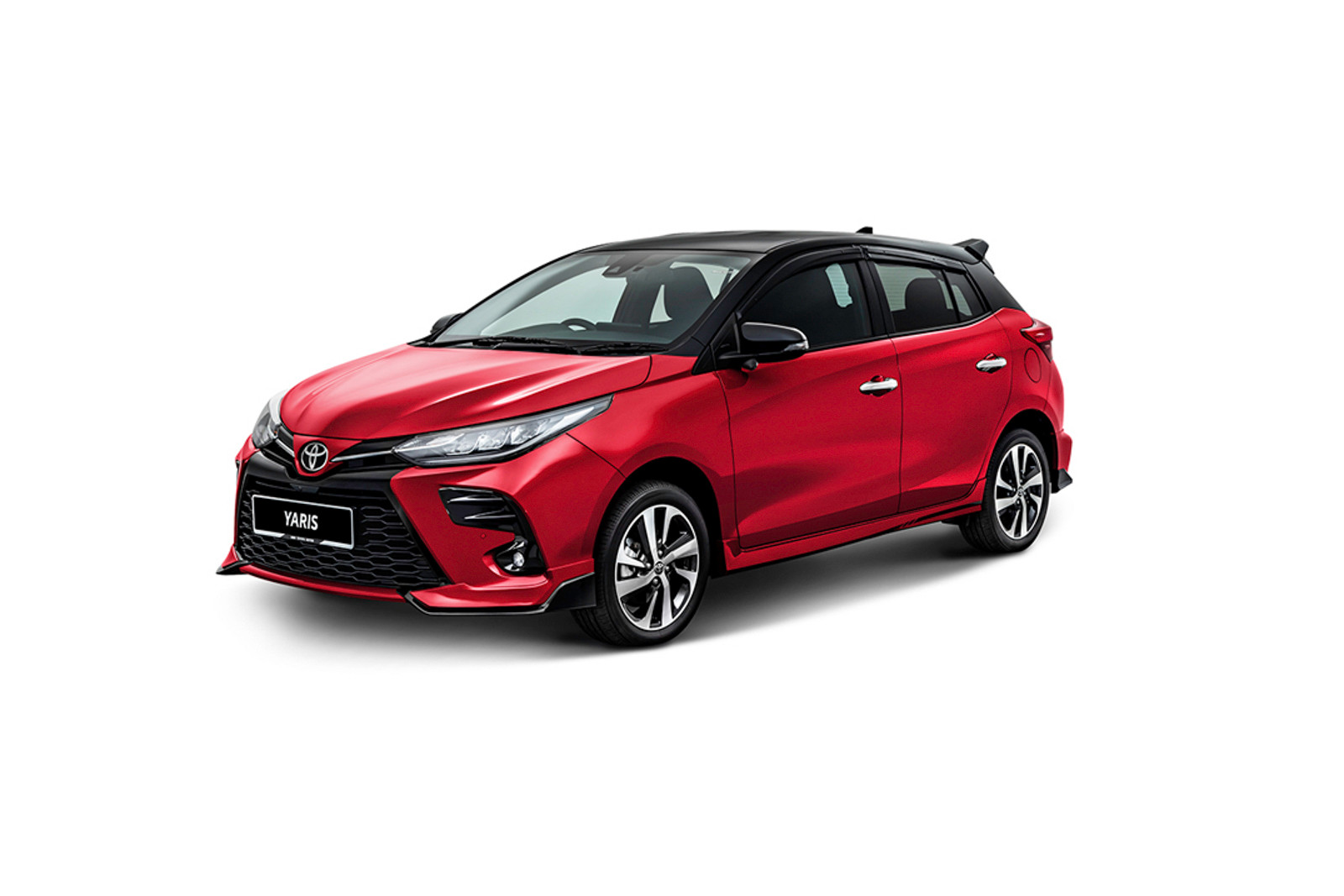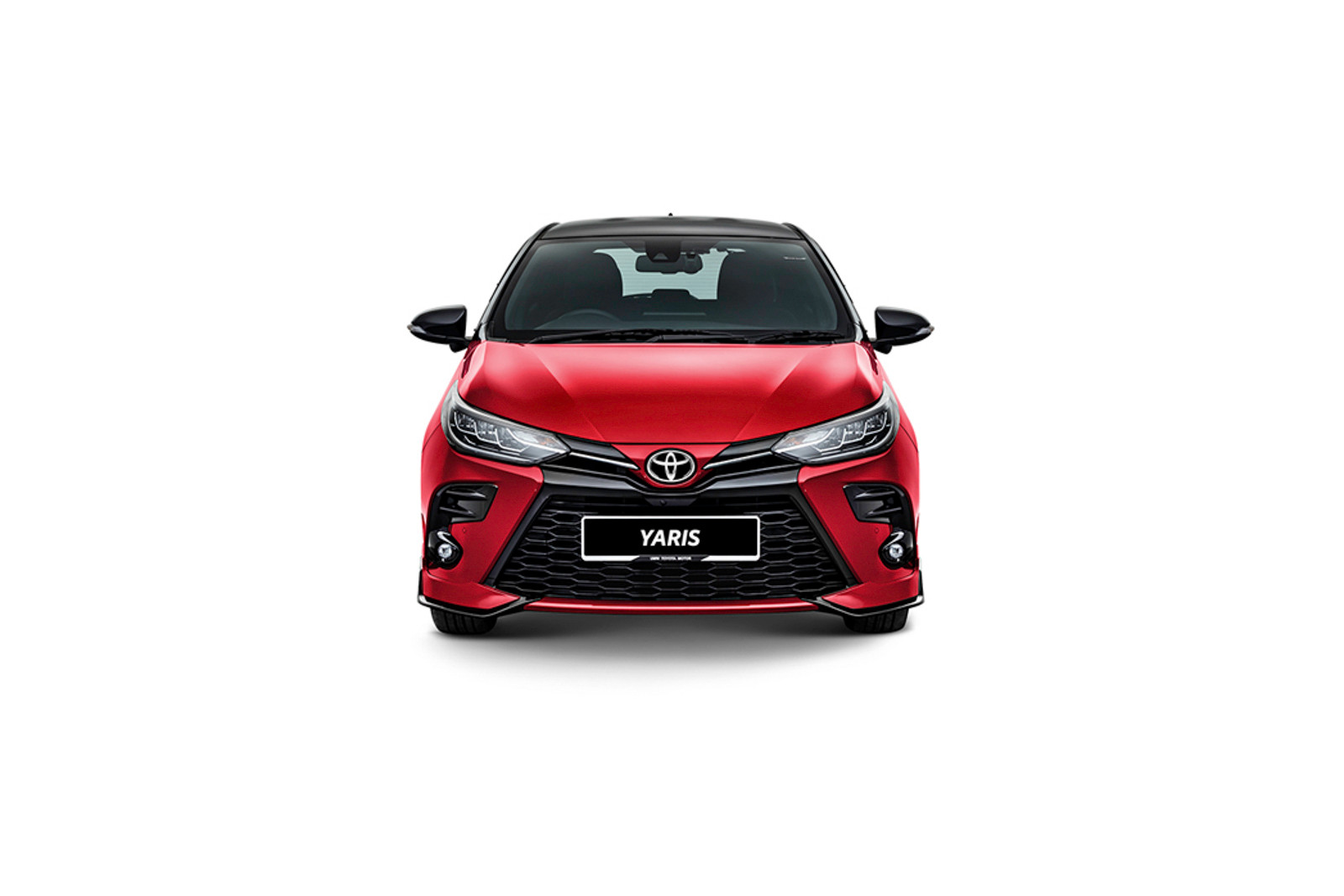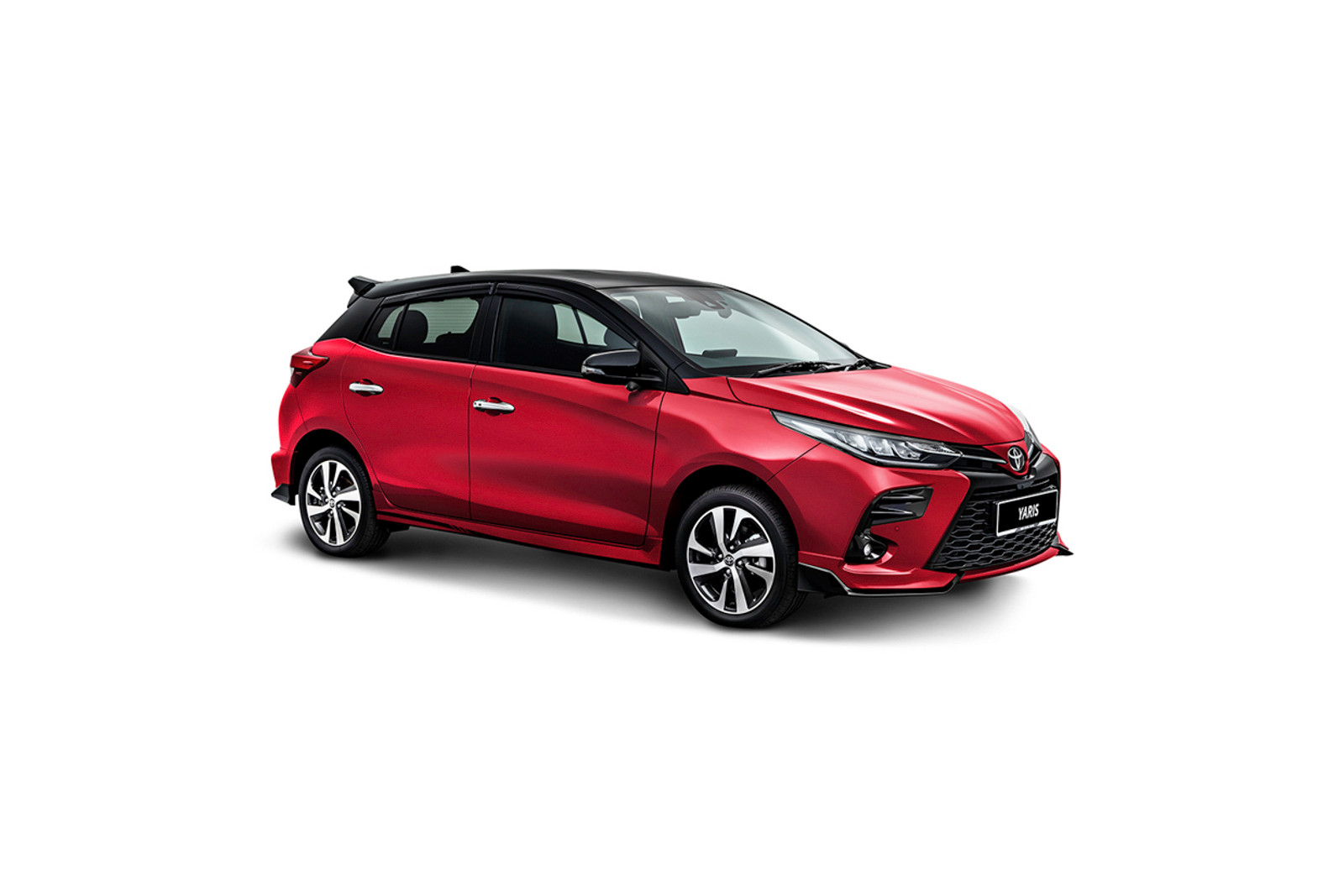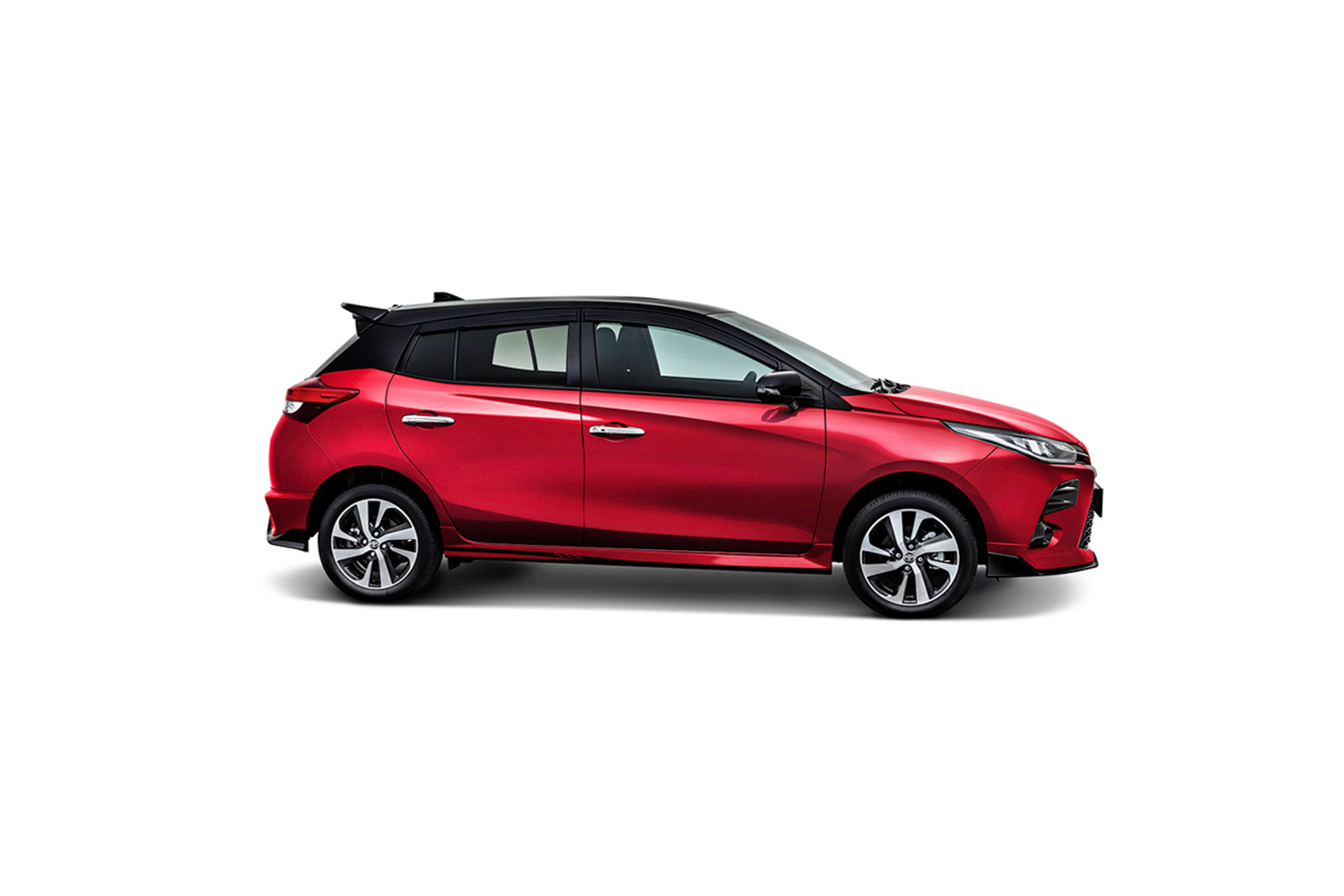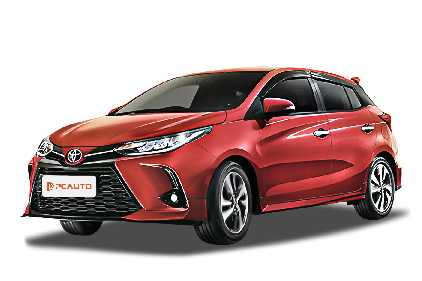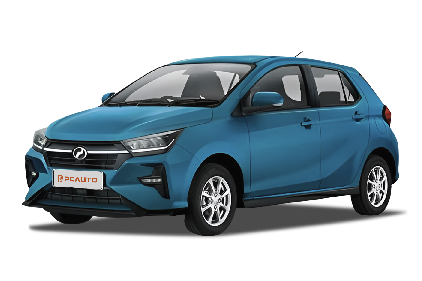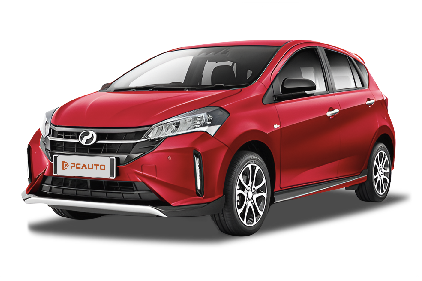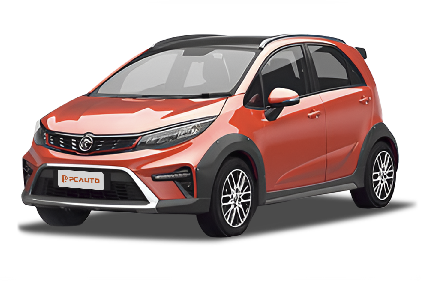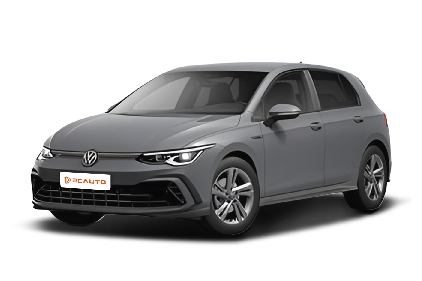Q
What is the length and width of Toyota Yaris?
The Toyota Yaris is a pretty popular small car in the Malaysian market. It's roughly 4,140mm long and 1,730mm wide, though exact dimensions can vary a bit depending on the year and trim level. Its compact size makes it a total breeze for Malaysian city driving – it really shines when you're navigating congested streets or squeezing into tight parking spots.
Beyond just its size, the Yaris has built a solid rep for fuel efficiency and reliability. The 1.5-liter four-cylinder engine under the hood delivers a smooth drive, and the fuel economy is impressive too – perfect for daily commutes. Inside, the focus is on practicality, with plenty of tech goodies like a touchscreen display and a multifunction steering wheel that make driving that much easier.
For Malaysian buyers, the Yaris isn't just an affordable pick; it handles both family trips and solo runs with ease. It's that sweet spot of practicality and value in a small car package.
Q
How much is new Toyota Yaris 2020?
The all-new 2020 Toyota Yaris hits the Malaysian market with prices varying by trim level. The entry-level 1.5J manual starts at around RM70,000, while the top-spec 1.5V automatic nudges closer to RM90,000 – though keep an eye out for dealer promotions or optional extras that might tweak that figure slightly. Under the hood, you'll find a 1.5-liter Dual VVT-i engine pumping out 106 horsepower and 140 Nm of torque, paired with a 7-speed CVT. It's a fuel-sipper too, making it a solid bet for city commutes.
What really stands out with the 2020 Yaris is its move to Toyota's latest TNGA-B platform. This isn't just tech jargon – it translates to better body rigidity and more stable handling. Safety gets a boost too, with VSC Vehicle Stability Control and HAC Hill-Start Assist coming standard, which is always reassuring.
For Malaysian buyers, Toyota's strong resale value and after-sales network are big pluses. Their service centers are dotted all over the country, so getting your Yaris serviced or repaired should be hassle-free. If your budget's a bit tight, don't sleep on Toyota's certified pre-owned program or keep an eye out for year-end sales – you might just score a sweet deal that makes this Yaris even more tempting.
Q
How to open the gas tank of Toyota Yaris?
To open the fuel tank cap on a Toyota Yaris, first make sure the car is unlocked. Then, look for a lever with a gas pump symbol near the driver's left floor area or on the door panel – give it a gentle pull to release the cap. After that, just press the outer side of the fuel door and it should pop open. Keep in mind that Yaris models from different years might have slight design variations; some newer versions could use an electronic button, usually located on the center console or the left side of the steering wheel.
For Malaysian owners, the hot and rainy local climate can cause mechanical parts to age faster, so it’s a good idea to regularly check if the tank cap’s rubber seal is in good condition to prevent rainwater or dust from getting into the tank. If you ever struggle to open the fuel door, don’t force it open by prying. Instead, try unlocking the car a few times or check the owner’s manual. If the problem persists, reach out to an authorized Toyota service center.
Also, Malaysian gasoline comes in RON 95 and RON 97 grades. The Yaris engine is designed to run on RON 95, and using the correct fuel grade will help protect the engine and improve fuel efficiency.
Q
How many cylinders in Toyota Yaris?
The Toyota Yaris comes with different engine setups depending on the market and model year. Here in Malaysia, the current third-gen Yaris (codenamed XP150) is primarily powered by a 1.5-liter naturally aspirated four-cylinder engine – either the 2NR-FE or 1NZ-FE. This engine is known for its solid reliability and good fuel economy, churning out around 107 horsepower. It pairs with either a CVT automatic or a 5-speed manual gearbox.
For Malaysian buyers, the four-cylinder layout offers better smoothness and more wallet-friendly maintenance compared to three-cylinder alternatives. Plus, the 1.5-liter displacement strikes a nice balance between usable power and manageable road tax costs – a key consideration here. Interestingly, while some overseas markets have gotten turbocharged three-cylinder Yaris variants, Malaysia has stuck with the tried-and-tested four-cylinder to cater to local drivers' preference for dependability.
If you need to double-check the cylinder count for a specific Yaris, your best bets are checking the metal plate under the hood or looking up the specs on Toyota Malaysia's official website. Minor tweaks to engine tuning might happen with facelifts over the years, but the core four-cylinder architecture usually stays the same.
Q
How to connect the Apple Carplay to Toyota Yaris?
To connect Apple CarPlay to your Toyota Yaris, first make sure your ride has a compatible infotainment system—since not every Yaris year gets CarPlay straight from the factory. Over in Malaysia, some post-2020 models might need a software update or even an add-on module to get it working. When hooking it up, grab your original Lightning cable (stick with Apple-certified ones to avoid those annoying compatibility headaches) and plug it into the USB port on the dashboard. Once your phone’s unlocked, it’ll usually pop up with a prompt to fire up CarPlay. If that doesn’t happen, dive into the "Smartphone" settings on your car’s system and switch it on manually. Heads-up: A bunch of Toyota models require you to do the initial pairing while the car’s parked—safety first, right?
On a side note, CarPlay’s performance leans on your phone’s software, so it’s a good idea to keep your iPhone updated to iOS 13 or newer for the best experience. And let’s not forget Malaysia’s sweltering heat—this can take a toll on your car’s system. Closing background apps every now and then should help keep things running smoothly. If you run into connection drops, try rebooting the car’s infotainment system or resetting your phone’s network settings. These tricks work for most Toyota models that support CarPlay, so they’re worth a shot.
Q
How to connect an Android phone to Toyota Yaris?
To connect your Android phone to a Toyota Yaris, first make sure your vehicle's infotainment system supports Android Auto. Most newer Yaris models (think post-2019) come with this built-in. Grab your original USB cable – trust us, using the factory one avoids all sorts of annoying compatibility headaches – and plug your phone into the car's USB port. Next, fire up USB debugging in your phone's settings and make sure you've got the latest Android Auto app installed. Once connected, the car's screen should prompt you for authorization; just follow the on-screen steps, and you'll be good to go for navigation, music streaming, and hands-free calls.
If you're rolling in an older Yaris without Android Auto, don't sweat it – Bluetooth pairing is your backup. Dive into the car's Bluetooth settings, switch on your phone's Bluetooth, and search for "Toyota Yaris." Pair 'em up, and you can still take calls and blast tunes, though functionality will be more basic.
Quick heads-up for our friends in Malaysia: keep an eye on your infotainment system version. Some locally assembled models might need a software update to iron out connection kinks. Also, Android Auto isn't a free-for-all – your phone needs to be running Android 8.0 or newer. If you hit a snag, try restarting both devices or resetting the car's system. Staying on top of software updates (both phone and car) goes a long way in keeping things smooth. And hey, if all else fails, your Toyota dealer's tech support team is there to help you get connected without the hassle.
Q
How to open the hood on Toyota Yaris?
To pop the hood on a Toyota Yaris, start by locating the hood release lever down by the driver's left foot, usually near the pedals. Give it a pull and you’ll hear a faint *click* as the hood pops open slightly. Then head to the front of the car, stick your hand into the gap at the center of the hood’s leading edge, find that safety latch lever, push it up, and lift the hood the rest of the way. If it feels a bit heavy, prop it up with the support rod. Now, keep in mind that older or newer Yaris models might have tiny differences, but the main steps are pretty much the same.
Living with Malaysia’s hot and rainy weather, it’s smart to regularly check under the hood: keep an eye on fluid levels and watch for any aging hoses or pipes. Coolant and brake fluid are big ones to monitor. Also, clear out any leaves or debris to stop drain holes from clogging up. If you ever struggle to open the hood or hear weird noises when you do, the hinges might just need a little love—grab some proper lubricant and give ’em a spray. Knowing how to do this stuff isn’t just handy for basic checks; it can also help you handle little issues fast in a pinch, keeping you safe on the road.
Q
What is the price of Toyota Yaris 2024?
The 2024 Toyota Yaris in Malaysia comes with a range of prices depending on the trim and specs. Right now, the entry-level 1.5J manual starts at around RM70,000, while the top-spec 1.5V can go up to roughly RM90,000. Keep in mind, these numbers might shift a bit with dealer promotions or if you add on extra options.
Under the hood, it's packing a 1.5-liter Dual VVT-i engine that puts out 107 horsepower and 140 Nm of torque, paired with a 7-speed CVT. Fuel economy is a strong suit here, making it a solid pick for zipping around the city.
What really stands out with the 2024 Yaris is the safety upgrade – Toyota Safety Sense is now standard across the board. That means you get active safety features like pre-collision warning and lane departure alert, plus they've beefed up the body rigidity too.
For Malaysian buyers, the Yaris is a go-to choice thanks to Toyota's reputation for reliability and low maintenance costs. When you stack it up against competitors, it also holds its value pretty well over time. If your budget's a bit tight but you still want that Toyota quality, the used market is worth a look. A typical two-year-old Yaris will usually set you back 20-30% less than a brand-new one, but definitely check the service history and overall condition before you buy.
Q
How many seats does a Toyota Yaris have?
According to Toyota's official specs, the Toyota Yaris currently on sale in Malaysia comes standard as a 5-seater, with a 2+3 seating layout – two up front and three in the back, which covers most families' daily travel needs. What's worth pointing out is that as a popular B-segment hatchback, the Yaris really nails space utilization with its seats. The rear seats fold down in a 60:40 split, expanding the boot volume to a maximum of 948 liters – perfect for hauling longer items when you need to. Malaysian buyers should note there might be minor differences between model years and variants; for example, some overseas markets have seen 4-seater sporty versions, but all locally available models stick with the 5-seat setup. The Yaris has built up a solid fanbase among Malaysian city commuters thanks to its flexible space and reliable reputation. Its compact size makes it a breeze on those tight local roads, yet it still manages to offer a decent level of comfort – that's part of why it continues to sell so well across Southeast Asia.
Q
What kind of engine is in the Toyota Yaris 2023?
Toyota's 2023 Yaris hits Malaysian roads with two engine choices to suit different drivers. There's the tried-and-tested 1.5L four-cylinder naturally aspirated unit (codename 1NZ-FE), paired with a conventional 4-speed automatic transmission. Then you've got the more advanced 1.5L three-cylinder Dynamic Force engine (M15A-FKS), which comes mated to Toyota's snappy Direct Shift-CVT for a nice blend of pep and fuel efficiency.
What really stands out about the Dynamic Force mill is Toyota's latest tech: it uses D-4S dual-injection and a high compression ratio to push out 106 hp and 140 Nm of torque. More importantly, it's tuned for better combustion efficiency, meaning it sips less fuel – perfect for Malaysia's stop-start city traffic. If you like a bit more fun behind the wheel, the 1.5L three-cylinder variant even throws in a Sport driving mode. On the flip side, the naturally aspirated four-cylinder wins points for being easy on maintenance costs.
Both engines play by Malaysia's emission rules and stay true to Toyota's reputation for bulletproof reliability. So, local buyers basically have two solid paths: go for the three-cylinder if you want the latest tech, or stick with the four-cylinder if you value tried-and-true simplicity. Your call depends on your budget and what you prioritize most.
